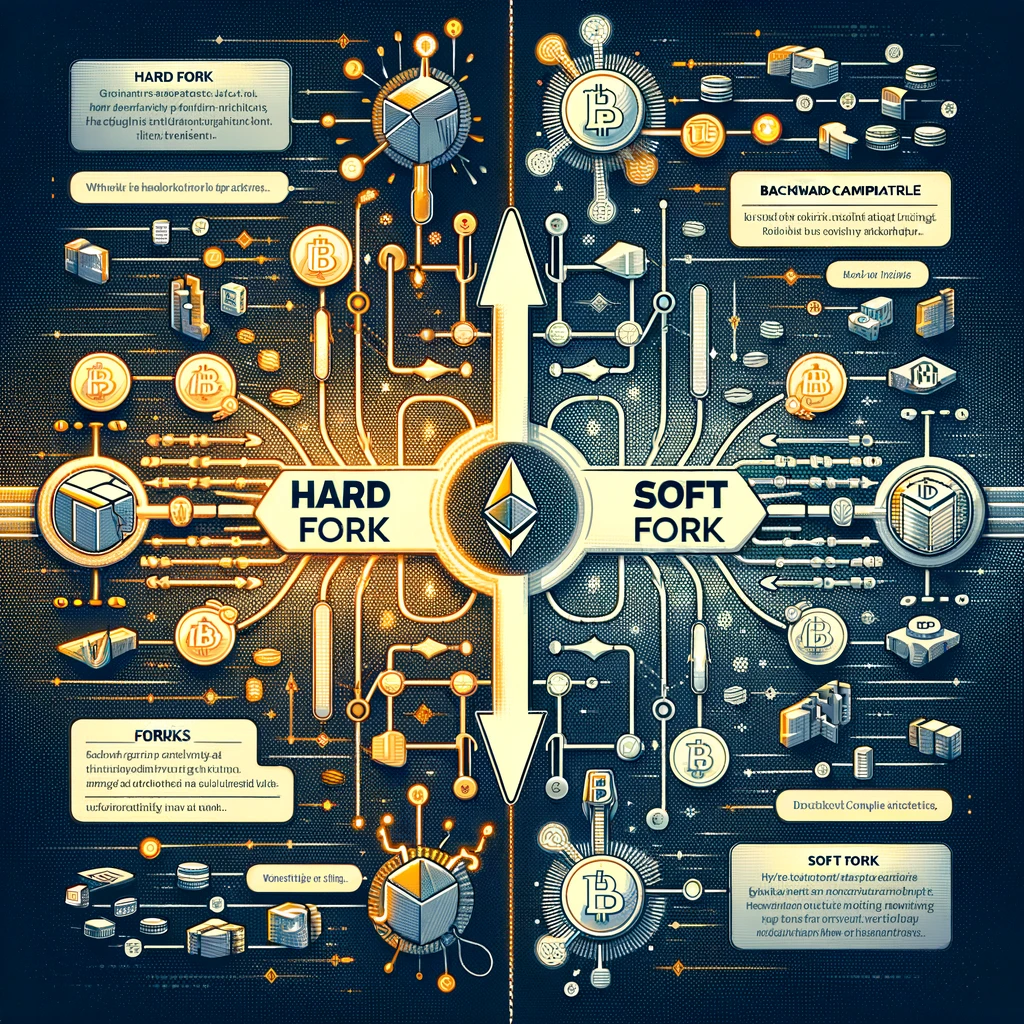ความยืดหยุ่นของบล็อกเชน. ซิดเชนและช่องการชำระเงิน

เมื่อพูดถึงเรื่องคริปโตและเทคโนโลยี เช่นบล็อกเชน การขยายมาตราฐานกลายเป็นปัญหาที่สำคัญ แต่มันหมายความว่าอย่างไร?
ความหมายของคำว่า "การขยายมาตรฐาน" คืออะไร?
โดยภาพรวม การขยายมาตรฐานหมายถึงความสามารถของระบบในการเติบโตและพัฒนาพร้อมกับความต้องการที่เพิ่มขึ้น เมื่อเข้าสู่โลกของระบบคอมพิวเตอร์ นั่นหมายความว่าคุณสามารถปรับปรุงประสิทธิภาพของอุปกรณ์เพื่อการประมวลผลงานที่มากขึ้น ในกรณีของบล็อกเชน การขยายมาตรฐานหมายถึงความสามารถในการประมวลผลธุรกรรมได้มากขึ้น
ปัญหาในการขยายมาตรฐาน
โปรโตคอล เช่นบิตคอยน์ มีข้อดีของตัวเอง แต่การขยายมาตรฐานไม่ใช่หนึ่งในนั้น การทำงานของบิตคอยน์ที่มีฐานที่มีการกระจาย ต้องเผชิญกับข้อจำกัดในการประมวลผลธุรกรรม เมื่อมีจำนวนผู้ใช้เพิ่มขึ้น ปัญหาในความสามารถในการส่งผ่านของเครือข่ายก็เกิดขึ้น
รถไฟและตั๋ว: การอธิบายแสดงการขยายมาตรฐานของบล็อกเชน
คิดเสมือนว่าบล็อกเชนเป็นรถไฟ มีที่นั่งบางจำนวน (หรือ "โฉ่") สำหรับการทำธุรกรรม หากผู้โดยสารทุกคน (หรือธุรกรรม) ต้องการเข้ามาพร้อมกัน ราคาสำหรับที่นั่ง (หรือค่าธรรมเนียม) จะเพิ่มขึ้น การเพิ่มขนาดของ "โฉ่" อาจช่วยได้ แต่เป็นวิธีชั่วคราว
สามเหลี่ยมของการขยายมาตรฐาน
ผู้สร้างเอทีเธอเรียม วิทัลิค บูเทอริน ได้ระบุ "สามเหลี่ยมของการขยายมาตรฐาน" ซึ่งระบุถึงการต่อสู้ระหว่างการขยายมาตรฐาน ความปลอดภัย และการกระจาย คุณสมบัติเหล่านี้ไม่ได้สอดคล้องกันเสมอ และการค้นหาสมดุลระหว่างพวกเขาเป็นงานสำคัญ
การขยายมาตรฐานนอกเชน
การขยายมาตรฐานนอกเชนคือวิธีการให้สามารถดำเนินธุรกรรมในบล็อกเชนโดยไม่ต้องเพิ่มจำนวนบล็อก เป็นไปด้วยโปรโตคอลที่อนุญาตให้ผู้ใช้ส่งและรับเงินโดยไม่ต้องบันทึกโดยตรงบนเชื่อมต่อ
การแนะนำเกี่ยวกับเซตช่อง: การอธิบายและตัวอย่าง
เซตช่องคืออะไร?
เซตช่องหรือเส้นข้างคือบล็อกเชนย่อยที่มีการเชื่อมโยงกับโฉมหน้าหลักหรือเมฆเชน สิ่งสำคัญที่ต้องระบุคือเซตช่องและเมฆเชนทำงานร่วมกันและเป็นที่เข้ากันได้ทางฟังก์ชันซึ่งทำให้สามารถเคลื่อนย้ายทรัพย์สินระหว่างกันได้อย่างอิสระ
วิธีการทำงาน
เพื่อเข้าใจหลักการทำงานของเซตช่อง คำนึงถึงสถานการณ์: แอนนามีบิตคอยน์ 5 หน่วยและต้องการแลกเปลี่ยนกับเหรียญเสริม 5 หน่วยในเซตช่องบิตคอยน์ จะมีการเชื่อมโยงสองฝั่งที่ทำให้ผู้ใช้สามารถย้ายทรัพย์สินระหว่างโฉมหน้าและเส้นข้างได้อย่างอิสระ
กระบวนการแปลง
แอนนา ส่งบิตคอยน์ 5 หน่วยไปยังที่อยู่พิเศษซึ่งจะล็อคเงินไว้ และจำนวนที่สอดคล้องจะถูกสร้างขึ้นในเซตช่องเป็นเหรียญเสริม 5 หน่วย จากนั้น แอนนาสามารถดำเนินการในเซตช่องโดยส่งและรับเหรียญเสริมได้อย่างเสรีเช่นเดียวกับโฉมหน้าหลัก
เหตุผลที่จำเป็น
เซตช่องถูกสร้างขึ้นเพื่อแก้ไขปัญหาความสามารถในการส่งผ่านและความเร็วของธุรกรรมในบล็อกเชนหลัก เพื่อให้เป็นไปได้ในการสร้างระบบที่มีการตรวจสอบอนุญาตแบบเลือกเป็นระดับขยายใหญ่และมีการทำธุรกรรมที่เร็วขึ้น
ข้อดีของเซตช่อง:
- การทดลองและการอัพเดท: เซตช่องช่วยให้มีการทดลองและการใช้งานฟีเจอร์ใหม่ๆโดยไม่มีความเสี่ยงต่อบล็อกเชนหลัก
- ความสามารถในการส่งผ่านที่ดีขึ้น: ด้วยการตั้งค่าและขั้นตอนการตรวจสอบแบบยืดหยุ่นเพิ่มขึ้น การเชื่อมโยงสามารถประมวลผลธุรกรรมได้มากขึ้นในหน่วยเวลาหนึ่ง
- การแยกออกจากโฉมหน้าหลัก: ความผิดพลาดที่สำคัญในเซตช่องจะไม่ส่งผลกระทบต่อการทำงานของเครือข่ายหลัก ซึ่งทำให้มีความปลอดภัยและความมั่นคงของการทดลอง
พาเล็ทชาแนล (Payment Channel) เป็นกลไกที่คล้ายกับเซ็ตช่อง (Sidechain) ซึ่งช่วยให้การทำธุรกรรมเกิดขึ้นนอกบล็อกเชนหลักโดยไม่ต้องใช้บล็อกเชนย่อยเพิ่มเติม โดยมีพื้นฐานอยู่ที่สมาร์ทคอนแทรคท์ ที่ช่วยให้ผู้ใช้สามารถทำธุรกรรมกันได้โดยไม่ต้องเผยแพร่การทำธุรกรรมลงในบล็อกเชน เช่น เครือข่ายไลท์นิง (Lightning Network) ผู้ใช้จะฝากเงินลงในที่อยู่พิเศษที่มีลายเซ็นต์หลายอันก่อน จากนั้นพวกเขาสามารถโอนเงินให้กันและกันได้อย่างอิสระผ่านสมาร์ทคอนแทรคท์
ข้อดีของพาเล็ทชาแนล:
- ความมีประสิทธิภาพและความเร็ว: พาเล็ทชาแนลช่วยให้สามารถทำธุรกรรมได้ทันทีและด้วยค่าธรรมเนียมต่ำ เนื่องจากส่วนใหญ่ของการทำธุรกรรมเกิดขึ้นนอกบล็อกเชน
- ความปลอดภัย: สมาร์ทคอนแทรคท์ช่วยให้มั่นใจได้ในเรื่องของความปลอดภัยและการป้องกันการฉ้อโกง ทำให้พาเล็ทชาแนลเป็นวิธีการแลกเปลี่ยนที่เชื่อถือได้
- ความขยายได้: โดยการใช้เส้นทางการชำระเงินผู้ใช้สามารถทำการสื่อสารกันผ่านพาเล็ทชาแนลหลายช่อง ซึ่งเพิ่มประสิทธิภาพของเครือข่ายได้
สรุป
พาเล็ทชาแนลเช่นเครือข่ายไลท์นิงเป็นทางเลือกที่มีประสิทธิภาพสำหรับการทำธุรกรรมที่รวดเร็วและมีค่าธรรมเนียมต่ำนอกจากบล็อกเชนหลัก มันมั่นคงและปลอดภัย ทำให้เป็นทางเลือกที่น่าสนใจสำหรับผู้ใช้ที่ต้องการหลีกเลี่ยงข้อจำกัดของบล็อกเชนหลัก




